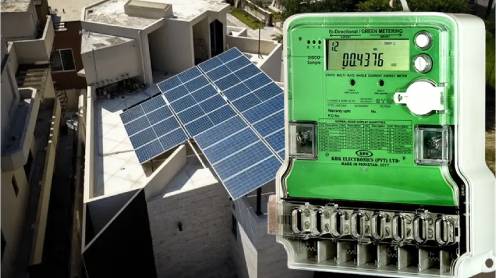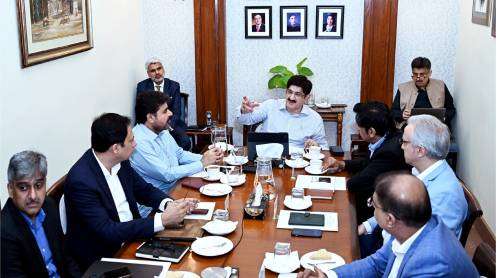ISLAMABAD: The government is considering setting the buyback rate of net metering at the average energy cost, aiming to extend the payback period from three to five years.
This was discussed in an online seminar titled “Net Metered Distributed Generation: Challenges, Solutions, and Way Forward,” organized by The Deutsche Gesellschaft für Internationale Zusammenarbeit GmbH (GIZ), the main German development agency.
The event brought together key stakeholders from the power sector, including the Power Division, National Electric Power Regulatory Authority (NEPRA), Central Power Purchasing Agency (CPPA), Power Distribution Utilities (Discos), Power Information Technology Company (PITC), Pakistan Solar Associations (PSA), solar EPC companies, and academia.
Participants were informed that under the current net metering (NM) regime, excess units are carried forward for three months and then converted into monetary value, which is adjusted against peak unit consumptions. This has led some NM consumers to install more than the required solar capacity, enabling them to offset their energy consumption for up to three months.
Discos and some experts proposed limiting this facility to a monthly basis to encourage self-consumption and the use of battery energy storage systems rather than over-installation of high-capacity solar PV systems.
A proposal was made to establish a central cell for Discos to oversee NM activities, integration of rooftop solar PV, hosting capacity analysis, and other technical issues. With 2,000 MW of net-metered installed capacity by April 2024 and over 130,000 net-metered systems generating 3 TWh of energy annually, discussions highlighted challenges such as high consumer voltage, distribution transformer power rating breaches, power quality issues, and increased reverse power flow.
To address these challenges, experts suggested installing transformer monitoring systems and enabling warning alarms to reduce transformer burnout. There was also a call to reduce the NM capacity limit to one times the sanctioned load, aligning with practices in Bangladesh, Saudi Arabia, and India.
The use of smart meters and data analytics was recommended to discourage unauthorized installations and improve network visibility. Conducting hosting capacity analysis using GIS mapping data was also proposed to help Discos manage the integration of solar PV more effectively.
Financial implications were also discussed, with suggestions to reduce the buyback rates for excess exported units from the national average power purchase price to the average energy purchase price. Experts argued that increasing the payback period to four to five years would be more balanced and sustainable for both sides.
The seminar concluded with a consensus on the need for Discos to provide practical examples of over-voltage and power quality issues under current NM limits, establish a central cell for NM progress monitoring, and reduce the unit net-off cycle to one month to encourage self-consumption of generated solar power.
Story by Mushtaq Ghumman







